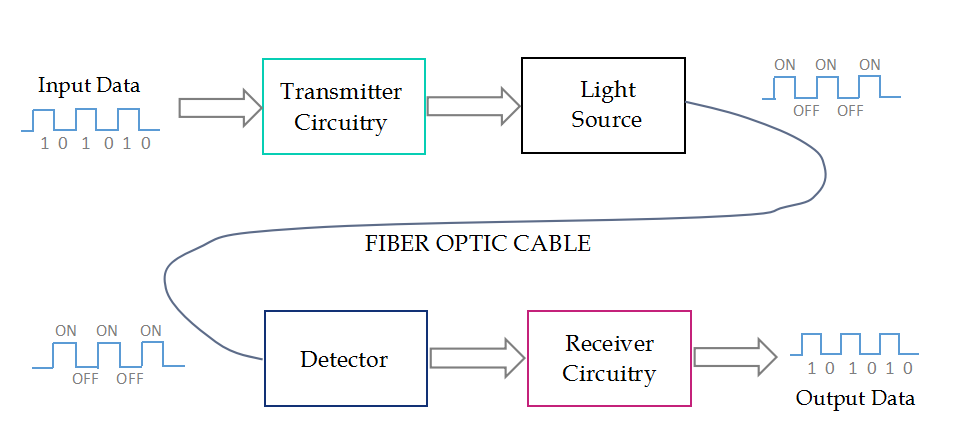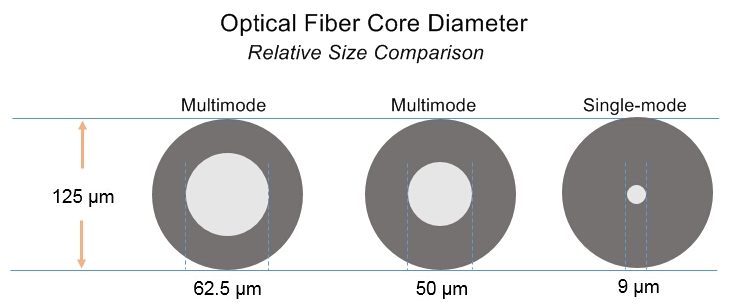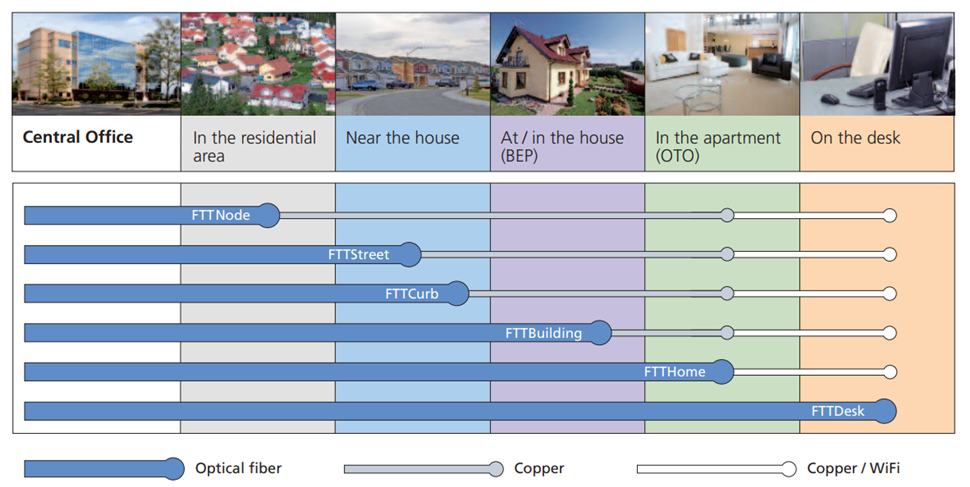According to the report reported by Global Newswire, global fiber optics market was valued at around USD 2.75 billion in 2016 and is expected to reach approximately USD 3.72 billion in 2012. These statistics show fiber optic transmission is experiencing its prime time and will change telecommunications greatly.
Driven by the rising demand for higher bandwidth and faster speed connections for a variety of industrial and residential purposes, fiber optic transmission is becoming more and more common in modern society. In this tutorial, the advantages and disadvantages of fiber optic transmission will be explored in details.
Fiber Optic Transmission Technology
Usually, a fiber optic communication system consists of three main components: optical transmitter, fiber optic cable and an optical receiver. The optical transmitter converts electrical signal to optical signal; the fiber optic cable carries the optical signal from the optical transmitter to the optical receiver; and the optical receiver reconverts the optical signal to electrical signal. The most commonly used optical transmitter is semiconductor devices like LEDs (light-emitting diodes) and laser diodes. Photodetector is the key part of an optical receiver. It converts light into electricity using photodetector effect. As for the fiber optic cable, there is too much to say. As the use and demand for speed and bandwidth, the development of optical cables is amazing. Now in the optical cable market, there are OS2, OM1, OM2, OM3, OM4 and OM5 fiber cable for different optical applications. Optical fibers are used as a medium for telecommunication and networking because it is flexible and can be bundled as cables. It is especially advantageous for long-distance communications, because light propagates through the fiber with little attenuation compared to electrical copper cables. The figure below shows that all fiber optic transmission systems use modulated light to convey information from a transmitter to a companion receiver.
 Figure 1: Illustration of a basic fiber optic transmission system
Figure 1: Illustration of a basic fiber optic transmission system
Advantages of Fiber Optic Transmission
Optical fibers have largely replaced copper wire communications in core networks in the developed world, because of its advantages over electrical transmission. Here are the main advantages of fiber optic transmission.
Extremely High Bandwidth: No other cable-based data transmission medium offers the bandwidth that fiber does. The volume of data that fiber optic cables transmit per unit time is far great than copper cables. Longer Distance: in fiber optic transmission, optical cables are capable of providing low power loss, which enables signals can be transmitted to a longer distance than copper cables. Resistance to Electromagnetic Interference: in practical cable deployment, it’s inevitable to meet environments like power substations, heating, ventilating and other industrial sources of interference. However, fiber has a very low rate of bit error (10 EXP-13), as a result of fiber being so resistant to electromagnetic interference. Fiber optic transmission is virtually noise free. Low Security Risk: the growth of the fiber optic communication market is mainly driven by increasing awareness about data security concerns and use of the alternative raw material. Data or signals are transmitted via light in fiber optic transmission. Therefore there is no way to detect the data being transmitted by "listening in" to the electromagnetic energy "leaking" through the cable, which ensures the absolute security of information. Small Size: fiber optic cable has a very small diameter. For instance, the cable diameter of a single OM3 multimode fiber is about 2mm, which is smaller than that of coaxial copper cable. Small size saves more space in fiber optic transmission.
 Figure 2: core diameter of fiber optic cable
Figure 2: core diameter of fiber optic cable
Light Weight: fiber optic cables are made of glass or plastic, and they are thinner than copper cables. These make them lighter and easy to install. Easy to Accommodate Increasing Bandwidth: with the use of fiber optic cable, new equipment can be added to existing cable infrastructure. Because optical cable can provide vastly expanded capacity over the originally laid cable. And WDM (wavelength division multiplexing) technology, including CWDM and DWDM, enables fiber cables the ability to accommodate more bandwidth.
Disadvantages of Fiber Optic Transmission
Though fiber optic transmission brings lots of convenience, its disadvantages also cannot be ignored.
Fragility: usually optical fiber cables are made of glass, which lends to they are more fragile than electrical wires. In addition, glass can be affected by various chemicals including hydrogen gas (a problem in underwater cables), making them need more cares when deployed under ground. Difficult to Install: it’s not easy to splice fiber optic cable. And if you bend them too much, they will break. And fiber cable is highly susceptible to becoming cut or damaged during installation or construction activities. All these make it difficult to install. Attenuation & Dispersion: as transmission distance getting longer, light will be attenuated and dispersed, which requires extra optical components like EDFA to be added. Cost Is Higher Than Copper Cable: despite the fact that fiber optic installation costs are dropping by as much as 60% a year, installing fiber optic cabling is still relatively higher than copper cables. Because copper cable installation does not need extra care like fiber cables. However, optical fiber is still moving into the local loop, and through technologies such as FTTx (fiber to the home, premises, etc.) and PONs (passive optical networks), enabling subscriber and end user broadband access.
 Figure 3: optical fiber and copper cable in FTTx
Figure 3: optical fiber and copper cable in FTTx
Special Equipment Is Often Required: to ensure the quality of fiber optic transmission, some special equipment is needed. For example, equipment such as OTDR (optical time-domain reflectometry) is required and expensive, specialized optical test equipment such as optical probes and power meter are needed at most fiber endpoints to properly provide testing of optical fiber.
Summary
Fiber optic transmission is widely used for data transmission and is increasingly being used in place of metal wires because of its efficiency and high transmission capacity. We have seen the fiber optic cables have replaced traditional copper twisted-pair cable or coaxial cable. As the use and demand for great bandwidth and fast speed, there is no doubt that fiber optic transmission will bring more opportunities and be continuously researched and expanded to cater for future demands.
 Figure 1: Illustration of a basic fiber optic transmission system
Figure 1: Illustration of a basic fiber optic transmission system Figure 2: core diameter of fiber optic cable
Figure 2: core diameter of fiber optic cable Figure 3: optical fiber and copper cable in FTTx
Figure 3: optical fiber and copper cable in FTTx